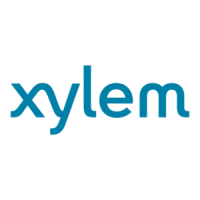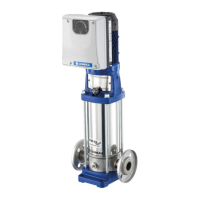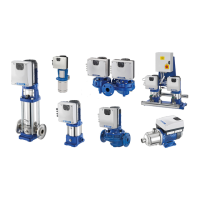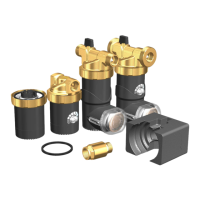Installation
The Presfix Beta unit is despatched mounted on a wooden pallet and covered in a protective film, it is recom-
mended that the unit be retained in the protective packaging until the product is to be installed. The unit will
arrive pre-packaged and wired ready for installation.
This product has been fully run tested at our works under simulated site conditions. The unit
should be thoroughly checked for physical damage that may have been caused during transit.
If the unit is found to have damage it must be reported immediately and should not be installed.
The unit must be sited in a dry clean well-ventilated area with good all round access, mounting
can be either wall or floor. The unit is despatched with bottom fixing brackets turned inward suitable for wall
mounting, for floor mounting turn brackets to face outward which will give access to mounting holes.
Electrical connections
The cable used for the incoming supply must be of adequate size to carry the motor full load
current. This is shown on the duty plate. All non-power cabling should be limited to 2.5mm².
All connections must be made using the appropriate wiring drawings for the equipment being
installed, with particular attention being paid to the supply voltages.
The supply voltage is shown on the set duty plate.
Never operate this product with the control panel door in the open position.
It is essential that this equipment is earthed to the building earth system.
Pumps operate at 230v 50Hz
The base frame must be earth bonded directly to the building earth system.
All wiring should be arranged such that it enters the control section through the appropriate
cable glands.
Water supply and system connection
Connect the Presfix Beta set ½”BSP ball valve (left side of cabinet) to a suitable water supply, incorporating
an approved stop cock. If the pressure available at the ball valve is below 0.3 bar, a low pressure orifice must
be obtained and fitted. Extend the 22mm plastic overflow pipe from the Presfix Beta break tank
to a position where an overflow will be noticed and rectified. Ensure the warning pipe is able to
handle the incoming water volume, if this is not the case then a pressure reducing valve should
be fitted to the incoming water supply. System 1:connect the pressurisation port ½” BSPF (left
hand side of cabinet) to the expansion vessel pipeline which in turn should be connected to the
suction side of the system circulating pump. Quick fill and isolating valves must also be fitted to this line (see
connection sketch Fig 1)
System 2:connect the pressurisation port ½” BSPF (right hand side of cabinet) to the expansion vessel
pipeline which in turn should be connected to the suction side of the system circulating pump. Quick fill and
isolating valves must also be fitted to this line (see connection sketch Fig 1)
The Break tank is constructed to have a weir slot as required by the water bylaws to prevent back flow con-
tamination, if the inlet ball valve or NRV suffered a catastrophic failure the overflow may not be able to keep
up with the inflow in which case excess water will be ejected through the weir slot and onto the plant room
floor, if this is not acceptable then consideration should be given to fitting the pressurisation set onto a try with
overflow to drain.
2

